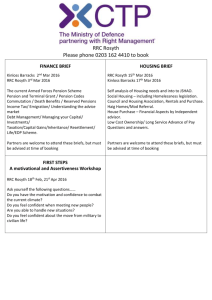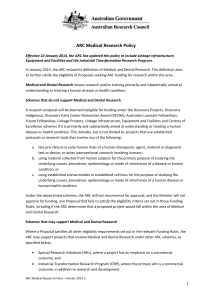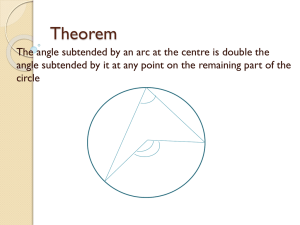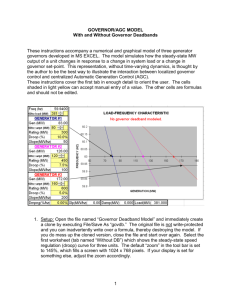Demystifying ARCs and RRCs
advertisement
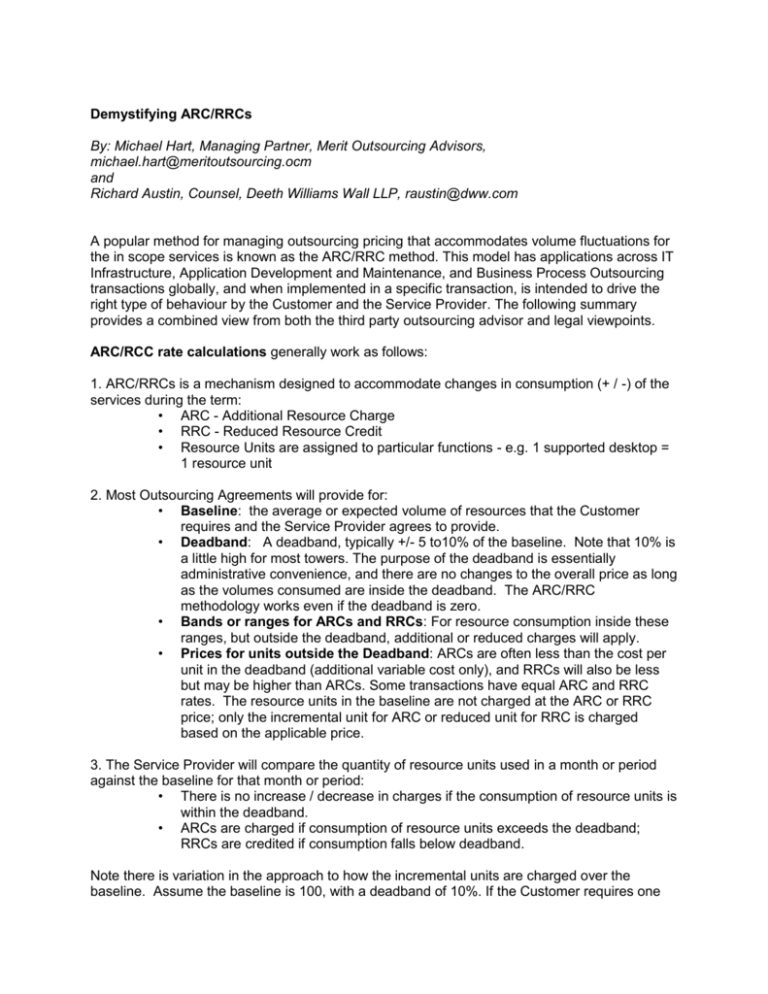
Demystifying ARC/RRCs By: Michael Hart, Managing Partner, Merit Outsourcing Advisors, michael.hart@meritoutsourcing.ocm and Richard Austin, Counsel, Deeth Williams Wall LLP, raustin@dww.com A popular method for managing outsourcing pricing that accommodates volume fluctuations for the in scope services is known as the ARC/RRC method. This model has applications across IT Infrastructure, Application Development and Maintenance, and Business Process Outsourcing transactions globally, and when implemented in a specific transaction, is intended to drive the right type of behaviour by the Customer and the Service Provider. The following summary provides a combined view from both the third party outsourcing advisor and legal viewpoints. ARC/RCC rate calculations generally work as follows: 1. ARC/RRCs is a mechanism designed to accommodate changes in consumption (+ / -) of the services during the term: • ARC - Additional Resource Charge • RRC - Reduced Resource Credit • Resource Units are assigned to particular functions - e.g. 1 supported desktop = 1 resource unit 2. Most Outsourcing Agreements will provide for: • Baseline: the average or expected volume of resources that the Customer requires and the Service Provider agrees to provide. • Deadband: A deadband, typically +/- 5 to10% of the baseline. Note that 10% is a little high for most towers. The purpose of the deadband is essentially administrative convenience, and there are no changes to the overall price as long as the volumes consumed are inside the deadband. The ARC/RRC methodology works even if the deadband is zero. • Bands or ranges for ARCs and RRCs: For resource consumption inside these ranges, but outside the deadband, additional or reduced charges will apply. • Prices for units outside the Deadband: ARCs are often less than the cost per unit in the deadband (additional variable cost only), and RRCs will also be less but may be higher than ARCs. Some transactions have equal ARC and RRC rates. The resource units in the baseline are not charged at the ARC or RRC price; only the incremental unit for ARC or reduced unit for RRC is charged based on the applicable price. 3. The Service Provider will compare the quantity of resource units used in a month or period against the baseline for that month or period: • There is no increase / decrease in charges if the consumption of resource units is within the deadband. • ARCs are charged if consumption of resource units exceeds the deadband; RRCs are credited if consumption falls below deadband. Note there is variation in the approach to how the incremental units are charged over the baseline. Assume the baseline is 100, with a deadband of 10%. If the Customer requires one additional unit above the deadband (i.e. 111 units), does the Customer pay the ARC for all 11 additional units or for just 1 additional unit (10 units being included in deadband)? Which of these two approaches the Customer picks depends on which way the Customer thinks its volumes will trend over the contract term. The base 100 units would always stay at the base price. If the Customer picks the option of just paying for the one additional resource unit in this example where it requires 111 units, then the same applies in the RRC situation when the Customer requires only 89 units. The Customer would pay the 100 unit baseline price all the way down to 90 units. The next one-unit reduction, getting to 89, reduces the overall price by just one RRC priced unit (in spite of thinking the Customer should get a price break for the ten units it no longer needs). The chart below clearly shows the model: A big caution for Customers and Service Providers from our experience: both parties should ensure there is a top and bottom to the ARC and RRC model volume bands. The ARC and RRC model will not work for both parties ad infinitum. At some point in the +/- math, the economics no longer work for the Service Provider or the Customer. If the reduction in the number of resource units is too large (e.g. 30-50% of deadband volume), the Service Provider cannot sustain service delivery. Conversely, if the number of additional resources required is huge (say 150-200% of the deadband), the Customer should be getting much lower overall pricing for this material growth, and a re-negotiation and resetting of the deadband needs to occur. Hence we recommend that Customers and Service Providers pick a cap for both ARCs and RRCs, based on acceptable volume fluctuations (e.g. +/- 30-40%). Of course, this does raise the issue of what happens if resource consumption exceeds the top end of the ARC range or falls below the bottom end of the RRC range. The Outsourcing Agreement will usually deal with this issue. The Service Provider’s supply obligations may be relaxed for consumption above the top end of the ARC range so that, rather than being required to provide the additional resources to the Customer, the Service Provider may only be required to use reasonable efforts to do so. Where the Customer’s resource consumption is below the bottom end of the RRC range, the Customer may be required to pay for the resources even though they were not consumed. If this happens on a regular basis, the pricing in the Outsourcing Agreement will need to be re-negotiated ARC/RRC Forecasting and Reporting Forecasting and reporting on the consumption of resources and the ARC and RRC impact is a critical component of any successful implementation of this pricing methodology. Where the Service Provider has resource constraints, either positive or negative, it is likely to request that the Customer provide forecasts of expected future volumes and with sufficient lead times. The purpose of the forecasts is to allow the Service Provider to make necessary adjustments to accommodate Customer requirements. Similarly, where the Customer is subject to budgetary constraints, the Customer will likely want reporting of units consumed, in real time or near real time. In some cases, the Service Provider’s reporting of resource consumption may be simple because the information can be automatically generated. If, however, the information needs to be collected, say from time sheets, there may be a time lag. Extending the ARC/RRC Methodology The description above focussed on how the ARC/RRC methodology applies in a single month to a single resource unit/service tower. However ARC and RRC pricing is often used where there are multiple resource units/service towers and over longer periods of time, e.g. across multiple months. 1. If there is more than one service tower and each service tower has its independent ARC and RRC pricing, this has the potential to introduce larger revenue swings and perhaps resourcing and invoicing challenges. However, at first blush, this does not seem to make the analysis more complicated than applying it to one service tower, but multiple times. 2. The analysis is more complicated when there is more than one service tower, each service tower has ARC and RRC pricing and there are connections between the service tower pricing. This is the situation where the Service Provider’s resources, e.g. employees, can provide services to service tower A or service tower B, but not both at the same time. The Customer and the Service Provider will need to define an “ARC/RRC exchange rate” between the different service towers: Does an increase or reduction in one resource unit of service tower A equate to an increase or reduction of one resource unit of service tower B, or does a weighting factor/exchange rate need to be applied and what is the price impact? This will also push the Customer and the Service Provider to place more emphasis on accurate forecasting and reporting of resource consumption and to impose limits on the size of the aggregate ARCs and RRCs. 3. Outsourcing agreements that use the ARC and RRC methodology will often impose annual (or other) limits on aggregate ARCs and RRCs. For example, the Customer may be entitled to increase or reduce resources by fifteen percent in any month so long as the annual increase or reduction is less than ten percent. For the Customer, such an approach may be the only way to persuade the Service Provider to agree to ARC and RRC bands of sufficient size to accommodate normal demand fluctuations in the Customer’s business. Provided the Service Provider is able to accommodate the resource fluctuations, the annual or other limits will provide the Service Provider with a way of protecting revenue over the term of the Outsourcing Agreement.




